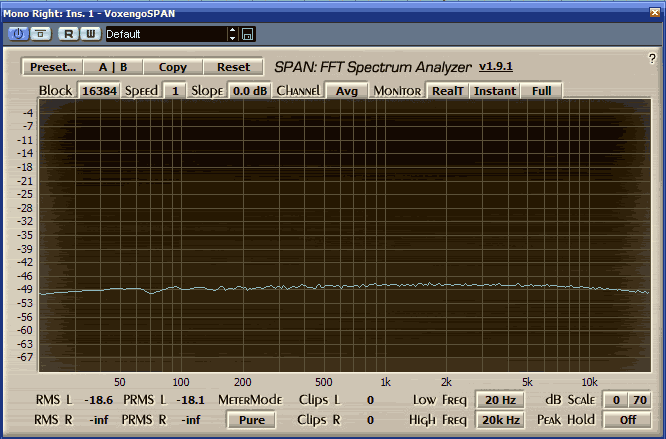Ok, here are the results.
First 3 screens are G9 via mic/line.
The last 3 are G9 via DI.
Input & output transformers are OEP 262.
[G9 bought 2nd hand, no other infos printed on cans].
Audio Precision testing machine [thanks to "playboss" user here, its wonderful ;D].
Tests gave same results using all output generator impedances [40 150 600] Ohm.
Edit: turned out it was a bad connection on PCB. Impedance now does matter on the bass roll-off.
Same results also with different G9 gain/output settings.
Generator output: sweep with sine wave 20Hz-1000Hz, -9.64 dBm. [tried also with -5dBm, -15dBm, -20dBm, -30dBm, -40dBm, always similar results.. worse with lower signals]
Analyzer input: 100K Ohm.
BTW, the sound of this pre is fabulous.
Just curious if doing mods, swapping input transformers, etc, I'll lose the magic.

First 3 screens are G9 via mic/line.
The last 3 are G9 via DI.
Input & output transformers are OEP 262.
[G9 bought 2nd hand, no other infos printed on cans].
Audio Precision testing machine [thanks to "playboss" user here, its wonderful ;D].
Tests gave same results using all output generator impedances [40 150 600] Ohm.
Edit: turned out it was a bad connection on PCB. Impedance now does matter on the bass roll-off.
Same results also with different G9 gain/output settings.
Generator output: sweep with sine wave 20Hz-1000Hz, -9.64 dBm. [tried also with -5dBm, -15dBm, -20dBm, -30dBm, -40dBm, always similar results.. worse with lower signals]
Analyzer input: 100K Ohm.
BTW, the sound of this pre is fabulous.
Just curious if doing mods, swapping input transformers, etc, I'll lose the magic.















